These devices equip electrodes to detect liquid levels. They have been widely used in water works and sewers for buildings and housing complexes, industrial facilities and equipment, water treatment plants and sewage treatment facilities, and many other applications.
Floatless Level Controllers (61F) are electronic liquid level detectors used in a wide range of applications such as water and sewer services for office and apartment buildings, industrial applications for iron and steel, food, chemical, pharmaceutical, and semiconductor industries, and liquid level control for agricultural water, water treatment plants, and wastewater plants. When the electrodes are in contact with liquid, the circuit is closed (the liquid completes the path for electricity to flow) and the electrical current that flows in this circuit is used to detect the level of the liquid. A variety of conductive liquids can be controlled using this method. Detecting the resistance between the electrodes and comparing it to see if it is larger or smaller than a reference resistance is used to detect the surface of the liquid.
Office and apartment buildings normally have a ground tank and an elevated tank. Water is supplied from the water mains into the ground tank, pumped up to the elevated tank, then distributed to each floor.
When the water level in the elevated tank is low, water is pumped up from the ground tank to supplement it. When the water level reaches a certain level, the pump stops. (See figure 1.)
Elevated tanks are controlled in this manner to maintain the water level within upper and lower limits as shown below.
Figure 1. Water Supply Control
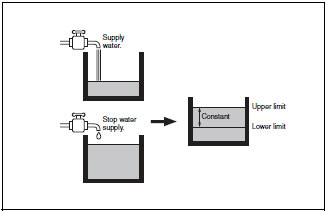
Figure 2. Low Water Level
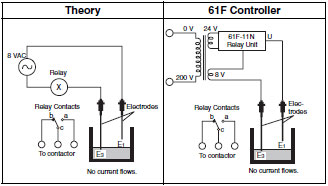
Figure 3. High Water Level
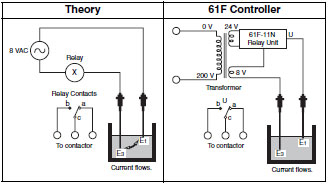
An extra electrode E2 is added, and E1 and E2 are connected via contact a2 as shown in figure 4. When electrode E1 is in contact with the conductive liquid (as in point 2 of previous section), relay X operates and switches to the a side. Even if the liquid level falls below E1, the electrical circuit made through the liquid and the electrodes is retained by E2 and E3, as long as contact a2 is closed.
This kind of circuit made from electrode E2 and a contact is called a self-holding circuit.
When the liquid level falls below E2, the circuit made through the electrode circuit opens, which de-energizes relay X, thus closing the NC contact of X. This enables control of relay X to be switched ON and OFF between E1 and E2.
Figure 5 shows the timing chart of this mechanism.
Operating as simply as it does, possible applications of the Floatless Level Controller other than liquid level control include applications as leakage detection, and object size discrimination.
Figure 4. Self-holding Circuit

Figure 5. Timing Chart

Note: Non-conductive liquids, such as oil, cannot be controlled using this method.

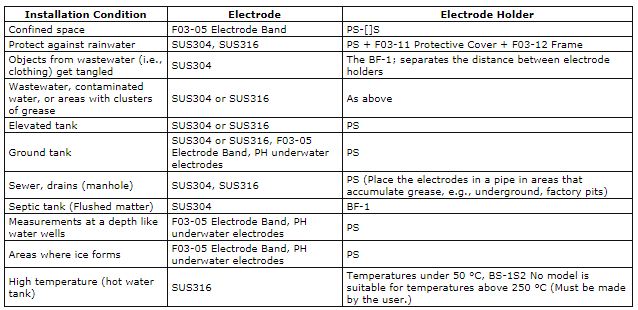
The limit for specific resistance of liquid that can be controlled with a generic Level Controller is 30 kOcm when using a PS-3S Electrode Holder within a submersion depth of 30 mm. For any fluid with specific resistance higher than this value, use a high-sensitivity Level Controller (H type). (See note.)
Table 1 and Table 2 shown upper and Table 3 below show specific resistances for typical liquids. Use these when selecting a model.
Note: 1. The high-sensitivity Level Controllers may suffer from resetting problems when used with certain types of water. In some cases it cannot substitute for the standard Level Controllers or Low-sensitivity Level Controllers. Be sure to select the model appropriate for the application.
2. The circuit configuration of the High-sensitivity 61F-[ ]H Level Controller is designed so that the relay is reset when there is water present between the electrodes. When power supply voltage is applied, the internal relay switches to the NO contact and, when there is conductivity between electrodes E1 and E3, the relay is reset to the NC contact. This contact operation is reversed for models other than the high-sensitivity models. Although the internal relay operates (and operation indicator turns ON) simply when the power supply voltage is applied, this operation is normal. (The relay in the 61F-[ ]NH energizes when there is water present between the electrodes.)
Note: For the ultra high-sensitivity variable 61F-HSL Level Switch, malfunction due to electric corrosion may occur in the DC electrode circuit. Be careful not to use the product where current constantly flows between electrodes.
Table 1: Specific Resistance of Water (General Guideline)

Table 2: Detectable Specific Resistance (Guideline)
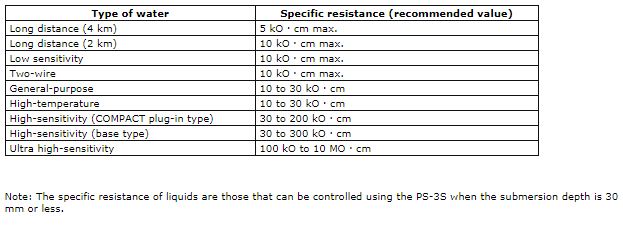
Conductance is a scale describing how easily current can flow. The relationship of Conductance and resistance is defined by the following equation.

Table 1 can be modified to contain the corresponding conductance as shown in Table 1A.
Table 1A: Specific Conductance of Water (Guideline)

Table 3: Specific Resistance of Various Liquids
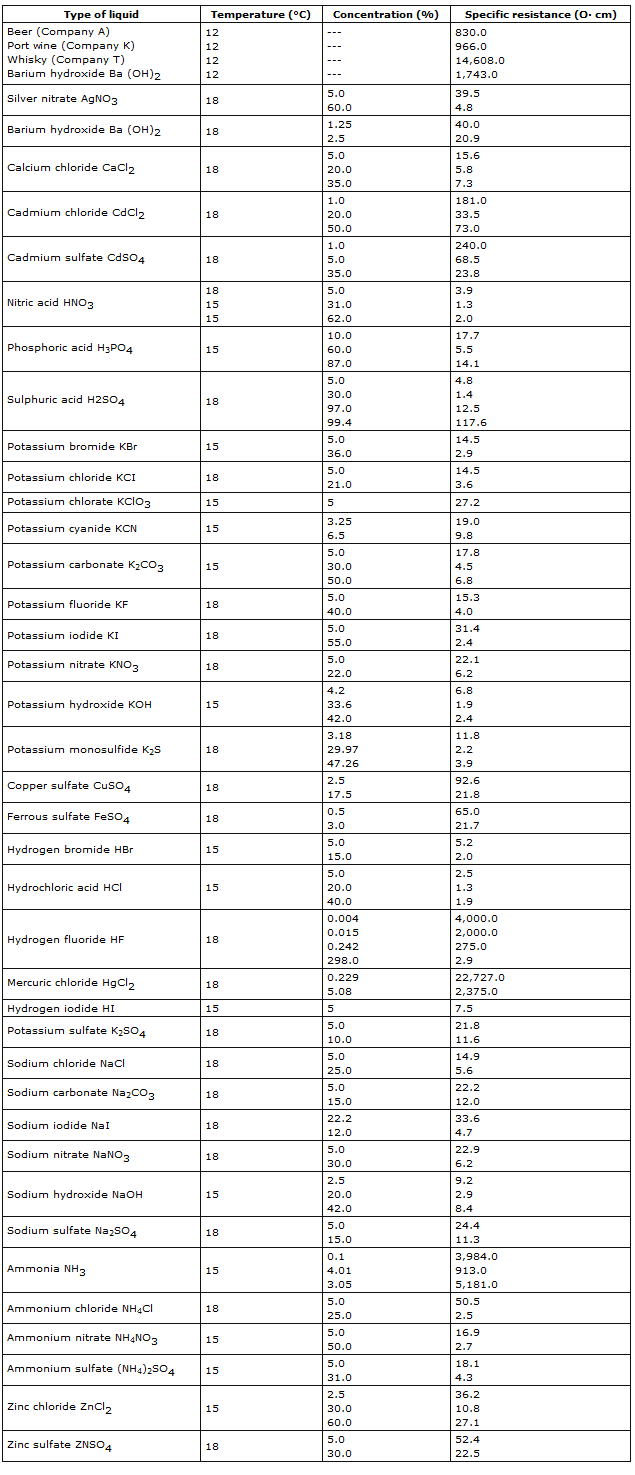
To get the most out of the electrodes, refer to Table 4 to select the best material.
Table 4: Resistance to Corrosion of Electrode Material
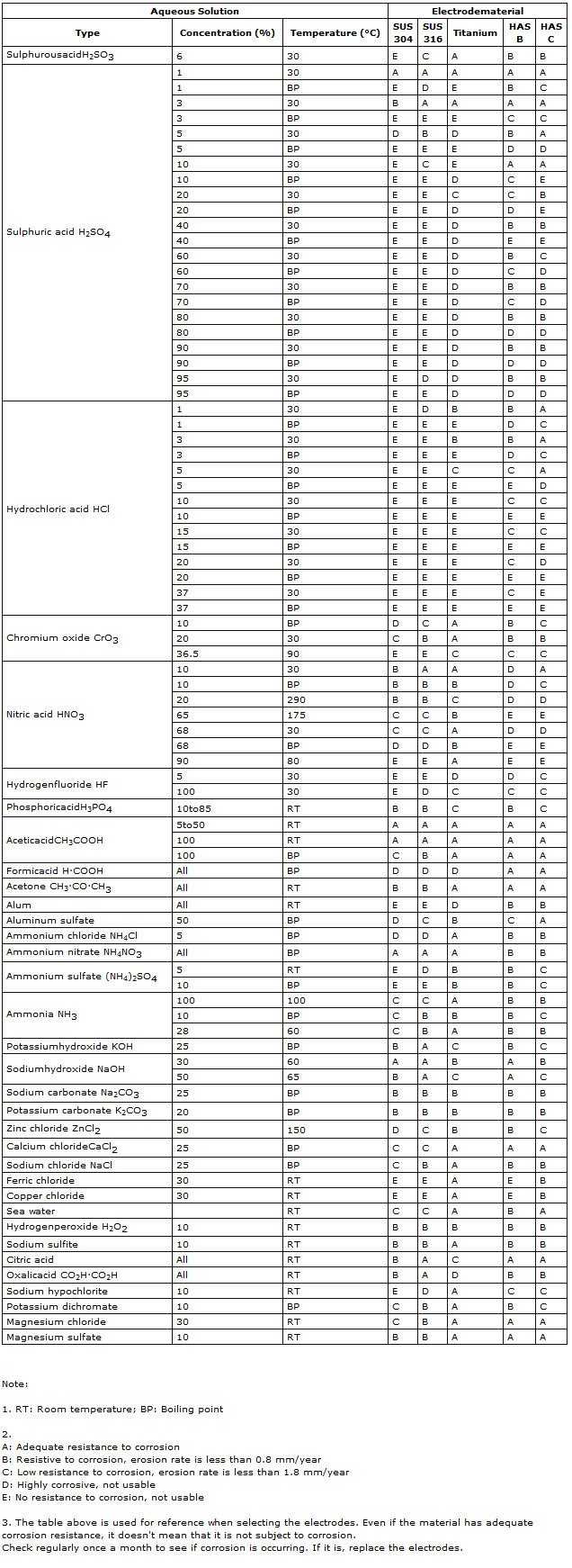
When selecting an Electrode Holder, make sure that you consider the corrosion resistance of the material of electrode holders as it may be exposed to the liquid inside the water tank.